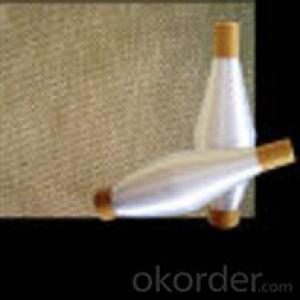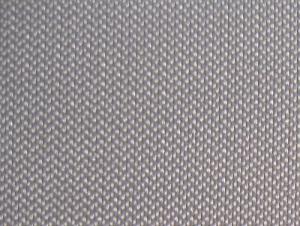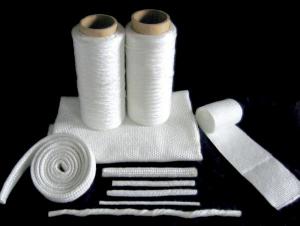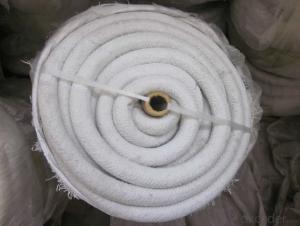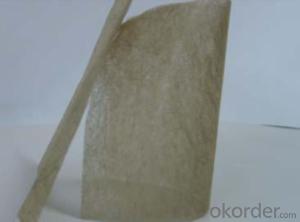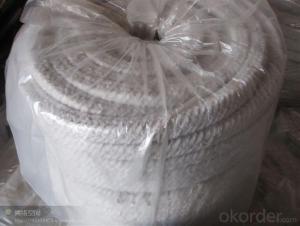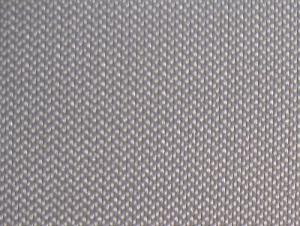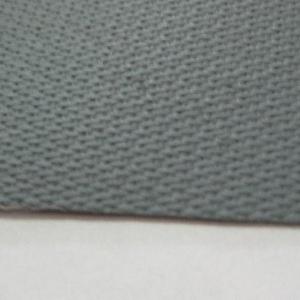Heat Insulation ceramic fiber textile
- Loading Port:
- Shanghai
- Payment Terms:
- TT OR LC
- Min Order Qty:
- 10 m.t.
- Supply Capability:
- 100 m.t./month
OKorder Service Pledge
OKorder Financial Service
You Might Also Like
Quick Details
| Type: | Twisted Rope | Application: | Heat Insulation | Thickness: | 4-60mm |
| Width: | 4-60mm | Length: | 30m | Grade: | HA (High Aluminum) |
| Chemical Composition: | AL2O3+SIO2 | Ultimate Strength (≥ MPa): | 0.04 | Working Temperature: | 1260 |
| Fiber Diameter: | 2-5um | Thermal Conductivity: | 0.075-0.175 w/m.k | Shrinkage (1800℉, 3h): | <=-3 |
| Place of Origin: | China (Mainland) | Brand Name: | Model Number: | HA-ceramic fiber rope | |
| Color: | White |
Packaging & Delivery
| Packaging Detail: | carton with inner plastic bag |
| Delivery Detail: | 15days after receiving advance payment |
Specifications
Heat Insulation high temperature ceramic fiber textile
professional factory
ceramic round/square/twisted rope
MSDS ISO9001
Heat Insulation Ceramic Fiber Rope
About Ceramic Fiber Rope
Iterm | Ceramic fiber rope |
Type | Ceramic fiber twisted rope |
Ceramic fiber square braided rope | |
Ceramic fiber round braided rope | |
Characteristics | ** Good thermal insulation |
** Excellent high temperature strength | |
** Good electrical insulation properties | |
** High chemical stability | |
** Low thermal conductivity | |
Typical Use | Hightemperature pipe insulation and seal, cable insulationcoating, flexible expansion joint connection,coke oven opening seal |
MOQ | 1m |
FOB Price | 4-6.5 USD/KG |
Port | Qingdao |
Payment Terms | L/C, D/A, D/P, T/T |
Packing | Carton with inner plastic bags |
Delivery | Within 15 days after delivery deposit |
Certificate | ISO9001, MSDS |
- Q:Can glass fiber textiles be used for aerospace applications?
- Yes, glass fiber textiles can be used for aerospace applications. Glass fiber textiles, also known as fiberglass textiles, have several properties that make them suitable for aerospace applications. Firstly, they have excellent strength-to-weight ratio, which is crucial in aerospace where weight reduction is a key consideration. Glass fiber textiles also have good dimensional stability, meaning they can maintain their shape and structural integrity even under extreme conditions such as high temperatures and vibrations experienced in aerospace environments. Additionally, glass fiber textiles offer high resistance to corrosion and chemicals, making them suitable for use in harsh aerospace environments. They are also electrically non-conductive, which can be advantageous in certain aerospace applications. Furthermore, glass fibers can be woven into various forms and shapes, allowing for flexibility in design and application. Overall, glass fiber textiles provide a lightweight, strong, and durable solution for aerospace applications, making them a viable choice for various components such as aircraft interiors, structural elements, insulation, and even in composite materials used for aircraft construction.
- Q:Can glass fiber textiles be used in reinforcement of rubber?
- Glass fiber textiles have the potential to reinforce rubber materials. They possess remarkable mechanical properties and high strength, which makes them a perfect choice for enhancing the durability and tensile strength of rubber products. Incorporating glass fiber textiles into rubber composites improves overall performance and increases the load-bearing capacity of the rubber material. By distributing stress evenly throughout the rubber matrix, the glass fibers provide reinforcement and minimize the risk of cracks, enhancing resistance to deformation. Furthermore, glass fiber textiles enhance tear resistance, abrasion resistance, and dimensional stability of rubber products. This makes them especially suitable for various applications that demand robust and long-lasting rubber materials, such as automotive components, conveyor belts, hoses, gaskets, and seals.
- Q:Can glass fiber textile be embroidered?
- Yes, glass fiber textile can be embroidered.
- Q:How do glass fiber textiles contribute to impact resistance?
- In various ways, glass fiber textiles contribute to impact resistance. To begin with, these textiles are woven from strands of glass fibers, resulting in a durable and strong fabric. When subjected to external forces, this fabric is highly resistant to breaking or tearing, making it an ideal material for impact resistance. Moreover, glass fiber textiles possess a high tensile strength, allowing them to withstand significant stress before breaking. This strength enables the fabric to absorb and distribute the impact force, reducing the likelihood of harm to the underlying surface or structure. Additionally, glass fiber textiles exhibit a high modulus of elasticity, meaning they can deform under stress and return to their original shape once the stress is relieved. This property allows the fabric to effectively absorb and dissipate energy from impacts, minimizing the transfer of force to the impacted surface. Furthermore, glass fiber textiles are renowned for their exceptional resistance to thermal and chemical factors. This resistance to heat and corrosive substances enhances their ability to withstand impact, as they are less prone to degradation or weakening when exposed to extreme temperatures or harsh chemicals. In conclusion, the combination of strength, tensile properties, elasticity, and resistance to heat and chemicals makes glass fiber textiles highly effective in providing impact resistance. They can absorb and distribute impact force, minimize surface damage, and maintain structural integrity even in challenging conditions.
- Q:Can glass fiber textiles be used in reinforcement of plastics?
- Yes, glass fiber textiles can be used in the reinforcement of plastics. Glass fiber textiles, also known as fiberglass, are widely used as a reinforcing material due to their high strength and stiffness properties. When incorporated into plastics, such as thermosetting or thermoplastic resins, glass fiber textiles enhance their mechanical properties, such as tensile strength, flexural strength, and impact resistance. The fibers provide additional reinforcement by acting as a structural component within the plastic matrix, improving its overall performance and durability. Additionally, glass fiber textiles can also improve the dimensional stability of plastic components by reducing shrinkage and warping. Overall, the use of glass fiber textiles in the reinforcement of plastics is a common practice in industries such as automotive, construction, aerospace, and consumer goods.
- Q:Can glass fiber textiles be washed?
- Yes, glass fiber textiles can be washed.
- Q:Can glass fiber textile be used in corrosion-resistant materials?
- Yes, glass fiber textile can be used in corrosion-resistant materials. Glass fiber has excellent resistance to corrosion, making it suitable for use in various applications where protection against corrosion is required.
- Q:How do glass fiber textiles affect thermal comfort?
- Glass fiber textiles can improve thermal comfort by providing insulation and reducing heat transfer. These textiles have low thermal conductivity, which helps in keeping the body warm in cold conditions and preventing heat from entering during hot weather. Additionally, they have good breathability and moisture-wicking properties, allowing sweat to evaporate and keeping the body dry, enhancing overall comfort.
- Q:Can glass fiber textiles be used in the production of furniture?
- Yes, glass fiber textiles can be used in the production of furniture. Glass fiber textiles are strong, durable, and have excellent resistance to heat and chemicals. They can be used as upholstery or reinforcement material in furniture, providing added strength and stability to the product. Additionally, glass fiber textiles can also be used as a decorative element, adding a unique and modern touch to furniture designs.
- Q:Can glass fiber textile be used in window treatments?
- Yes, glass fiber textile can be used in window treatments. Glass fiber textiles are known for their durability, strength, and resistance to UV rays, making them ideal for window treatments. They can be used as curtains, blinds, or shades to provide privacy, control light, and block out heat. Glass fiber textiles are also flame-resistant, which adds an extra level of safety to window treatments. Additionally, they are easy to clean and maintain, making them a practical choice for window treatments in both residential and commercial settings.
1. Manufacturer Overview |
|
|---|---|
| Location | |
| Year Established | |
| Annual Output Value | |
| Main Markets | |
| Company Certifications | |
2. Manufacturer Certificates |
|
|---|---|
| a) Certification Name | |
| Range | |
| Reference | |
| Validity Period | |
3. Manufacturer Capability |
|
|---|---|
| a)Trade Capacity | |
| Nearest Port | |
| Export Percentage | |
| No.of Employees in Trade Department | |
| Language Spoken: | |
| b)Factory Information | |
| Factory Size: | |
| No. of Production Lines | |
| Contract Manufacturing | |
| Product Price Range | |
Send your message to us
Heat Insulation ceramic fiber textile
- Loading Port:
- Shanghai
- Payment Terms:
- TT OR LC
- Min Order Qty:
- 10 m.t.
- Supply Capability:
- 100 m.t./month
OKorder Service Pledge
OKorder Financial Service
Similar products
New products
Hot products
Related keywords
